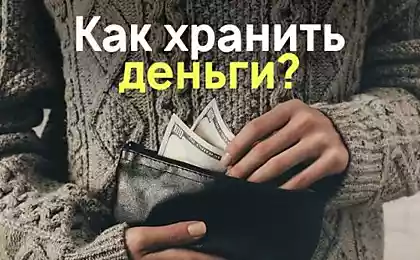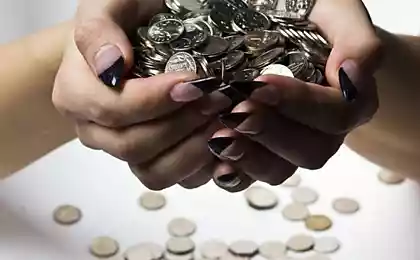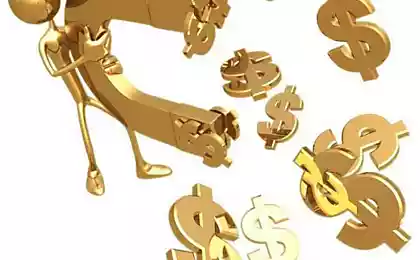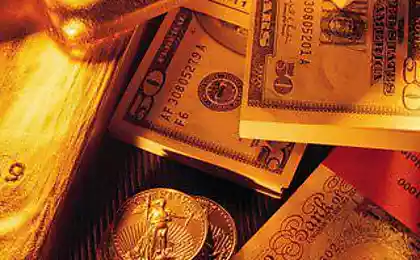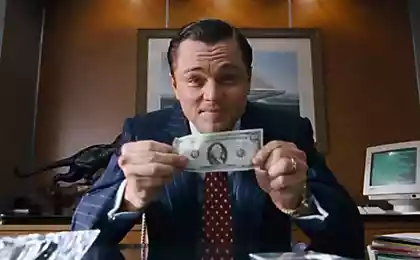1169
The most unusual money
Most bills often reflect some moments of political or cultural life of the country. For example, old banknotes of the Russian Empire huge size very carefully thought out. This bill is the Russian Empire in 1912 to Tsar Peter the Great.
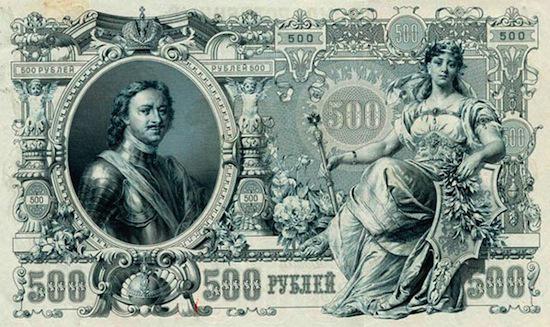
Money is the crisis of 1921 in Germany. These notes are astonishingly graphic design.
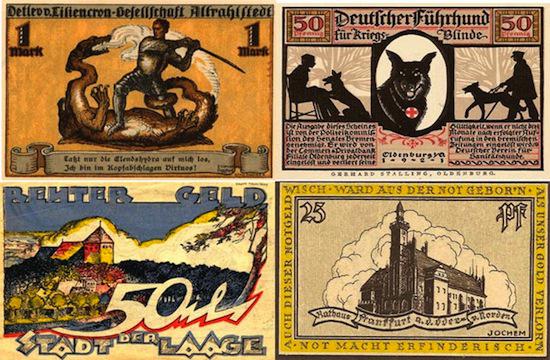
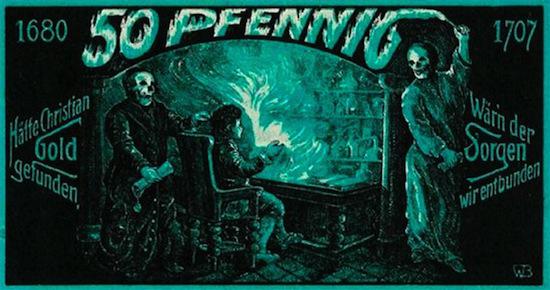

Polish bank banknote with the image of Frederick Chopin.

A simple squirrel is shown in notes of the Bank of Belarus. Belarusian money popularly called simply and concisely - bunny.

But the most ancient of all known bill. Previously, all paper money was used in China in 800 AD. But it preserved only banknote dated 1380 - is the oldest paper money.
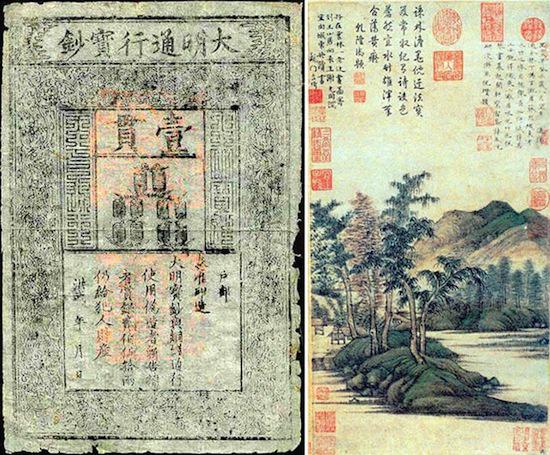
European paper money appeared in the seventeenth century. In 1633, British jewelry certificates were used as means of payment. In 1660, these certificates were used as an alternative to coins - these were the precursors of banknotes in England. Bank of Sweden was founded in 1656, offers loans, loans and deposits to customers. In 1661 Bank of Sweden introduced the first European paper money. Banknote hundred Daler was introduced into circulation in 1666:

In the UK the Bank of England banknotes introduced in 1694, but is widely used such money were only in 1921. The decimal currency was introduced in England, February 15, 1971. 50 pence coin, introduced one of the first very familiar to Britons since its introduction over 40 years ago. Initially, however, this coin was octagonal. There is also a 12-coal three pence coin and a coin on the floor singing, withdrawn from circulation in 1984.

In Scotland, there were many different institutions, separate from England and Wales. This was the case and money. Scottish bank notes are accepted in Scotland and usually in other parts of England, but in some stores may not accept them. However, they are also legal, as the British bank notes, and any financial institution will accept them without question.

Money Northern Ireland, as well as Scottish banknotes have the same status and technically can be used throughout the United Kingdom. However, they are rarely found outside Northern Ireland. Here, for example, the bill of 2006 from the limited series dedicated to football legend - George Best.
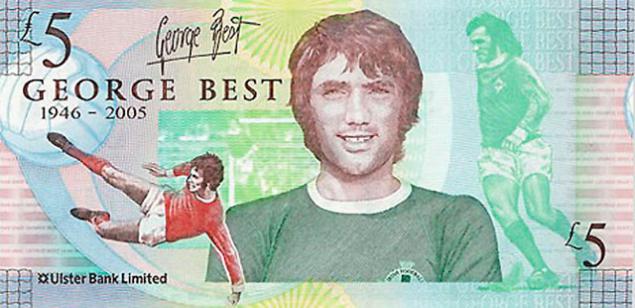
The Channel Islands and the Isle of Man are in the possession of the British Crown, but it is not part of the UK. These islands also have their money. But unlike Scotland and Northern Ireland, these notes can not be used across the UK. In the bill the Isle of Man is a popular symbol - three legs.
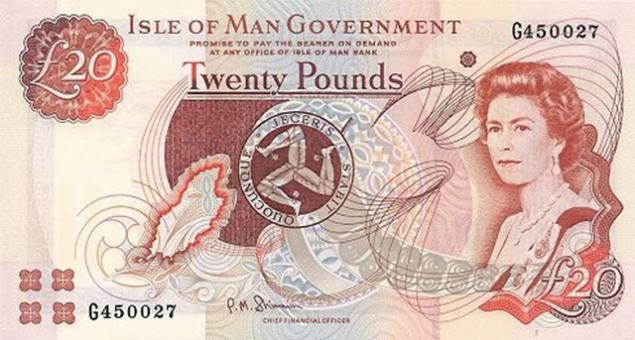
But the money the islands of Jersey and Guernsey, located in the English Channel.
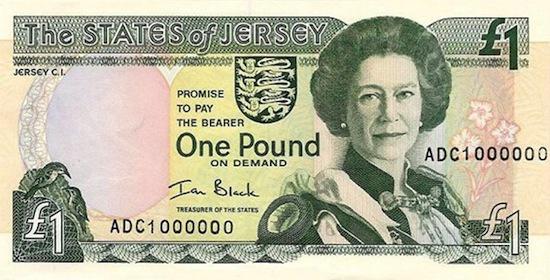
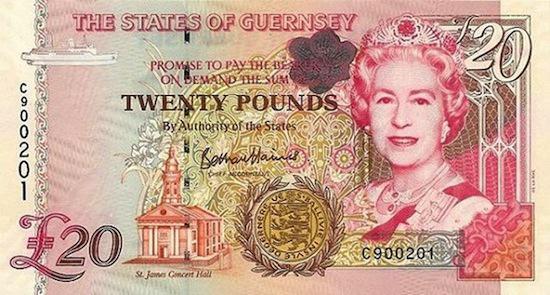
The Channel Islands were the only British soil occupied by the Nazis during the Second World War. That's what the currency used here during the German occupation. (money used in the photo above residents of Guernsey, as pictured below notes the German army).
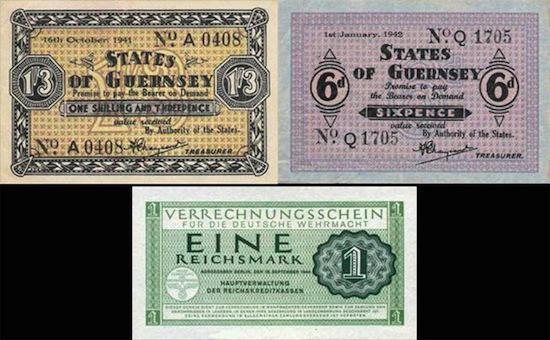
In the course of "Operation Bernhard" fascists dropped from aircraft counterfeit banknotes to destabilize the situation in England. This is one of those bills:
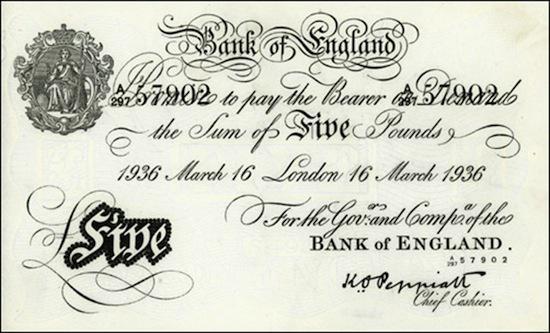
The remains of the once mighty British Empire - 14 Overseas Territories, including Gibraltar, the Falkland Islands and St. Helena, too, have their own currency. But the money was not accepted in the UK.
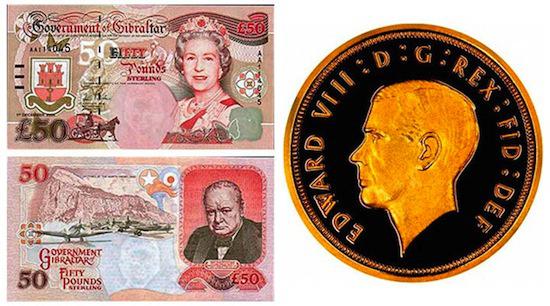
During the Civil War in America Confederates also had their paper money. Here is an example of two $ 20 bills in one bill - 1861, the other - 1864.
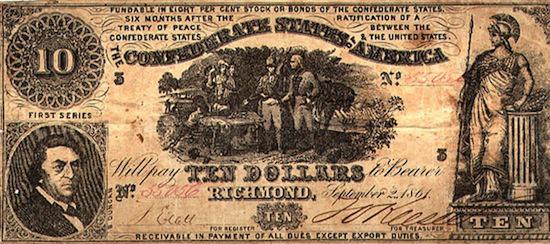

And here is the money of the Republic of Texas in 1830.
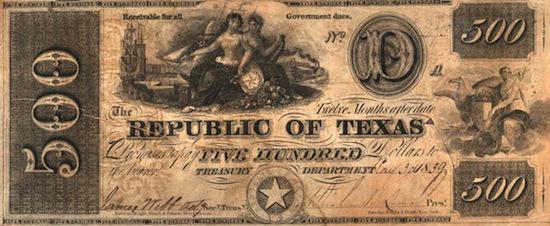
British coins in the shape of 3 pennies are not the most original. How do you coins minted in Zambia in honor of the Olympic Games in Sydney in 2000?
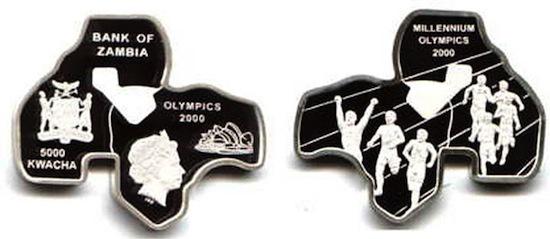
Everybody has heard of hyperinflation in Zimbabwe? The economic problems of the country were reflected in the currency. That bill, 2008 at $ 10 million:
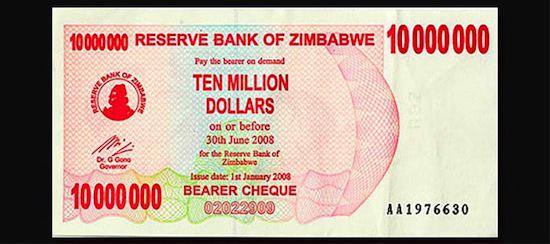
However, over time it has blocked the bill here:

Hyperinflation occurred in other countries. For example, in Germany during the First World War. That bill is 5 million marks, introduced in Dresden, August 21, 1923.
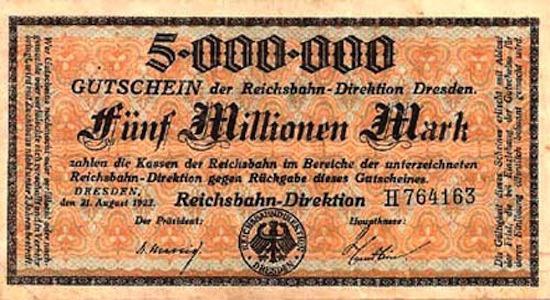
And here is the banknote of 10 million marks:

50 million brands:
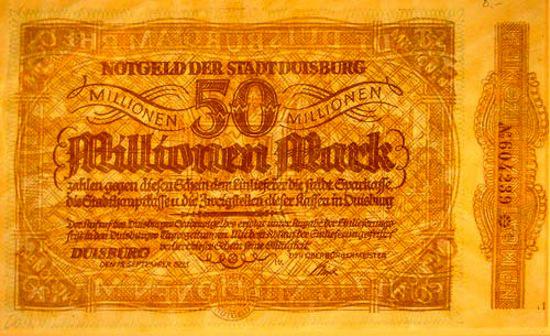
The denomination of 100 billion marks:

500 billion marks:

November 3, 1923 in Germany goes denomination in 100 trillion marks.
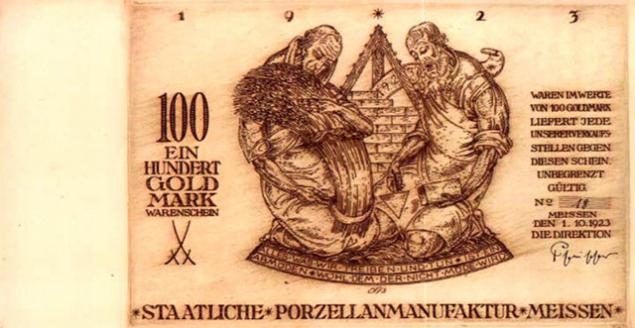
Later in Germany elected a new government headed by Adolf Hitler. He wanted to on the banknotes was his profile. Here's a design for the coin five Reichsmark, proposed in 1942, but was never brought to life.

And the money was established by the Nazis to a concentration camp Terezenshtadt (Theresienstad) in the Czech Republic. This camp was created to showcase the Red Cross a good attitude to Jewish prisoners. Representatives of the organization have shown how well care for prisoners, cultural events, send their children to school and pay the money for the work. In fact, in this camp were killed about 30,000 people, and 90,000 others were sent to death camps. These notes 10 and 20 crowns were just part of the promotion for the Red Cross, in fact it is plain paper.

Joseph Stalin was captured on a coin of 1949, minted in the Soviet-occupied Czechoslovakia.

During World War II, Japan occupied a lot of areas where the occupation was also introduced currency. Here's the money entered during the occupation in Hong Kong
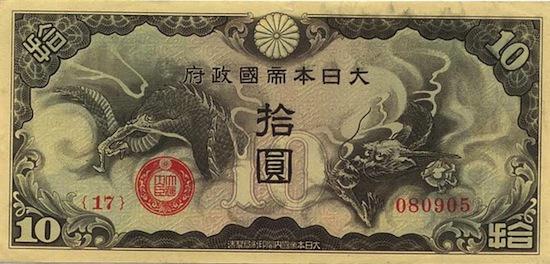
And this bill is introduced in the occupied Philippines.
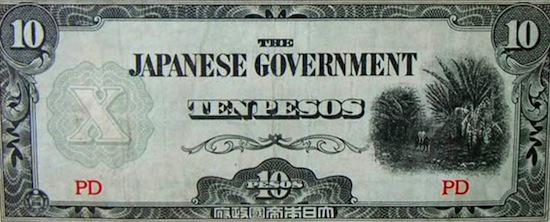
This banknote of 100 yuan was used in 1944 in Manchuria in the north-west of China.
And here's another obna banknote from Asia - the biggest banknote in the world - 16 centimeters in length and 16 in width - introduced in Thailand in 1987

There were problems with the currency in Ukraine. Curiously, almost every Ukrainian in the early 90s could safely call himself a millionaire - that Ukrainian banknote 1 million karbovancev (coupons). Karbovancev used in Ukraine from 1991 to 1996.
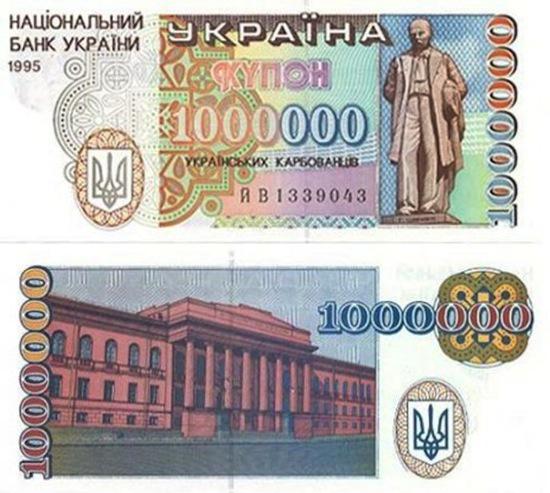
And it all began with an exchange of Soviet rubles in 1991 on the new money. That bill 1 karbovanets (coupon). Whence came the name of a coupon? Probably from the time coupons which were replacing the money in the beginning of perestroika.
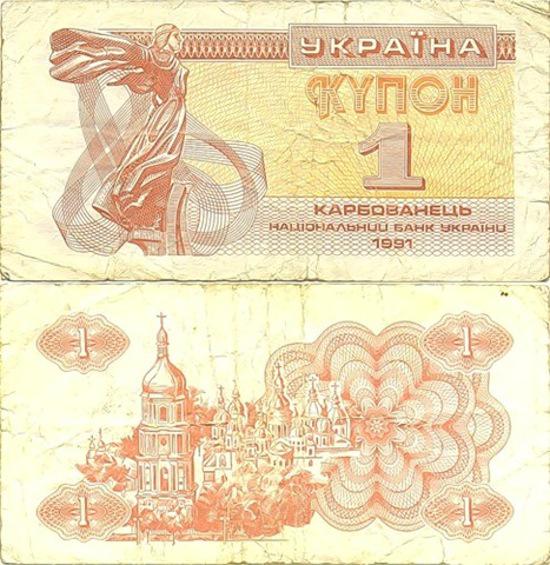
As mentioned above, all of the money in the end return to the zero value, some earlier some later. Most of these bills are now the only value to collectors.
Source: www.lifeglobe.net
via factroom.ru

Money is the crisis of 1921 in Germany. These notes are astonishingly graphic design.



Polish bank banknote with the image of Frederick Chopin.

A simple squirrel is shown in notes of the Bank of Belarus. Belarusian money popularly called simply and concisely - bunny.

But the most ancient of all known bill. Previously, all paper money was used in China in 800 AD. But it preserved only banknote dated 1380 - is the oldest paper money.

European paper money appeared in the seventeenth century. In 1633, British jewelry certificates were used as means of payment. In 1660, these certificates were used as an alternative to coins - these were the precursors of banknotes in England. Bank of Sweden was founded in 1656, offers loans, loans and deposits to customers. In 1661 Bank of Sweden introduced the first European paper money. Banknote hundred Daler was introduced into circulation in 1666:

In the UK the Bank of England banknotes introduced in 1694, but is widely used such money were only in 1921. The decimal currency was introduced in England, February 15, 1971. 50 pence coin, introduced one of the first very familiar to Britons since its introduction over 40 years ago. Initially, however, this coin was octagonal. There is also a 12-coal three pence coin and a coin on the floor singing, withdrawn from circulation in 1984.

In Scotland, there were many different institutions, separate from England and Wales. This was the case and money. Scottish bank notes are accepted in Scotland and usually in other parts of England, but in some stores may not accept them. However, they are also legal, as the British bank notes, and any financial institution will accept them without question.

Money Northern Ireland, as well as Scottish banknotes have the same status and technically can be used throughout the United Kingdom. However, they are rarely found outside Northern Ireland. Here, for example, the bill of 2006 from the limited series dedicated to football legend - George Best.

The Channel Islands and the Isle of Man are in the possession of the British Crown, but it is not part of the UK. These islands also have their money. But unlike Scotland and Northern Ireland, these notes can not be used across the UK. In the bill the Isle of Man is a popular symbol - three legs.

But the money the islands of Jersey and Guernsey, located in the English Channel.


The Channel Islands were the only British soil occupied by the Nazis during the Second World War. That's what the currency used here during the German occupation. (money used in the photo above residents of Guernsey, as pictured below notes the German army).

In the course of "Operation Bernhard" fascists dropped from aircraft counterfeit banknotes to destabilize the situation in England. This is one of those bills:

The remains of the once mighty British Empire - 14 Overseas Territories, including Gibraltar, the Falkland Islands and St. Helena, too, have their own currency. But the money was not accepted in the UK.

During the Civil War in America Confederates also had their paper money. Here is an example of two $ 20 bills in one bill - 1861, the other - 1864.


And here is the money of the Republic of Texas in 1830.

British coins in the shape of 3 pennies are not the most original. How do you coins minted in Zambia in honor of the Olympic Games in Sydney in 2000?

Everybody has heard of hyperinflation in Zimbabwe? The economic problems of the country were reflected in the currency. That bill, 2008 at $ 10 million:

However, over time it has blocked the bill here:

Hyperinflation occurred in other countries. For example, in Germany during the First World War. That bill is 5 million marks, introduced in Dresden, August 21, 1923.

And here is the banknote of 10 million marks:

50 million brands:

The denomination of 100 billion marks:

500 billion marks:

November 3, 1923 in Germany goes denomination in 100 trillion marks.

Later in Germany elected a new government headed by Adolf Hitler. He wanted to on the banknotes was his profile. Here's a design for the coin five Reichsmark, proposed in 1942, but was never brought to life.

And the money was established by the Nazis to a concentration camp Terezenshtadt (Theresienstad) in the Czech Republic. This camp was created to showcase the Red Cross a good attitude to Jewish prisoners. Representatives of the organization have shown how well care for prisoners, cultural events, send their children to school and pay the money for the work. In fact, in this camp were killed about 30,000 people, and 90,000 others were sent to death camps. These notes 10 and 20 crowns were just part of the promotion for the Red Cross, in fact it is plain paper.

Joseph Stalin was captured on a coin of 1949, minted in the Soviet-occupied Czechoslovakia.

During World War II, Japan occupied a lot of areas where the occupation was also introduced currency. Here's the money entered during the occupation in Hong Kong

And this bill is introduced in the occupied Philippines.

This banknote of 100 yuan was used in 1944 in Manchuria in the north-west of China.
And here's another obna banknote from Asia - the biggest banknote in the world - 16 centimeters in length and 16 in width - introduced in Thailand in 1987

There were problems with the currency in Ukraine. Curiously, almost every Ukrainian in the early 90s could safely call himself a millionaire - that Ukrainian banknote 1 million karbovancev (coupons). Karbovancev used in Ukraine from 1991 to 1996.

And it all began with an exchange of Soviet rubles in 1991 on the new money. That bill 1 karbovanets (coupon). Whence came the name of a coupon? Probably from the time coupons which were replacing the money in the beginning of perestroika.

As mentioned above, all of the money in the end return to the zero value, some earlier some later. Most of these bills are now the only value to collectors.
Source: www.lifeglobe.net
via factroom.ru
In each episode of the animated series South Park is the "Easter egg" - an alien
There are genetically modified people








